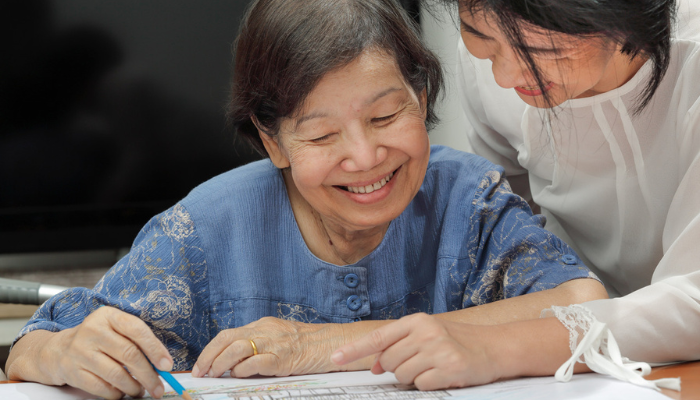
23 Jan The Power of Art Therapy Techniques for Seniors
Art has a unique ability to transcend age and connect with the soul. Among the many beneficiaries of its therapeutic effects, seniors stand out as a group that can greatly benefit from art therapy techniques. In this article, we will dive into the world of art therapy, explore its applications for the older generation, and highlight how it can enhance their health and quality of life.
The Healing Art of Art Therapy
Art therapy is a holistic approach to mental and emotional wellness that utilizes creative processes to improve one’s mental health and overall quality of life. It involves the use of various art forms, such as painting, drawing, sculpture, and even digital art, as a means of self-expression and healing. Although art therapy offers benefits to people of all age groups, its influence on seniors is notably profound.
Art Therapy Techniques for Seniors
1. Self-Expression and Communication:
For many seniors, articulating their thoughts and emotions can become challenging. Art therapy provides a non-verbal outlet for self-expression, allowing seniors to convey their feelings and experiences through images and colors. This can be particularly beneficial for individuals encountering communication challenges as a result of conditions such as dementia or Alzheimer’s disease.
2. Stress Reduction:
As we age, stressors such as health concerns, loneliness, and life transitions can take a toll on mental well-being. Engaging in art therapy can serve as a relaxing and stress-reducing activity. Engaging in artistic activities can evoke a sense of mindfulness and calmness, aiding seniors in effectively coping with stress.
3. Memory Enhancement:
Art therapy can stimulate memory recall in seniors. Creating art often involves reminiscing about past experiences and personal stories, which can be particularly beneficial for individuals with memory-related challenges. It functions as a cognitive workout that supports the preservation of memory.
4. Social Engagement:
Participating in group art therapy sessions provides seniors with an opportunity for social interaction and connection. It creates a sense of belonging and community, which can combat feelings of isolation that some older adults may experience.
5. Emotional Release:
Art therapy enables older adults to investigate and address their emotions within a secure and imaginative setting. It offers a way to release pent-up feelings, express grief, or find solace during times of emotional distress.
How Art Therapy Applies to the Older Generation
Art therapy techniques can be applied in various settings to benefit seniors:
1. Senior Living Communities:
Senior living facilities often incorporate art therapy programs into their activities. These sessions provide residents with the opportunity to participate in creative expression and interact socially with their peers.
2. In-Home Therapy:
Art therapists can visit seniors in their homes, providing personalized sessions tailored to individual needs and preferences. This choice is especially beneficial for seniors who are confined to their homes.
3. Memory Care Programs:
Art therapy is an integral part of memory care programs for individuals with Alzheimer’s or dementia. It improves cognitive function and fosters emotional well-being.
4. Hospice and Palliative Care:
Art therapy is used in end-of-life care to provide emotional support and comfort to seniors facing serious illnesses.
Art therapy techniques have a profound impact on the older generation, offering a range of physical, emotional, and cognitive benefits. Through creative expression, seniors can find solace, communicate their emotions, and enhance their overall quality of life.


